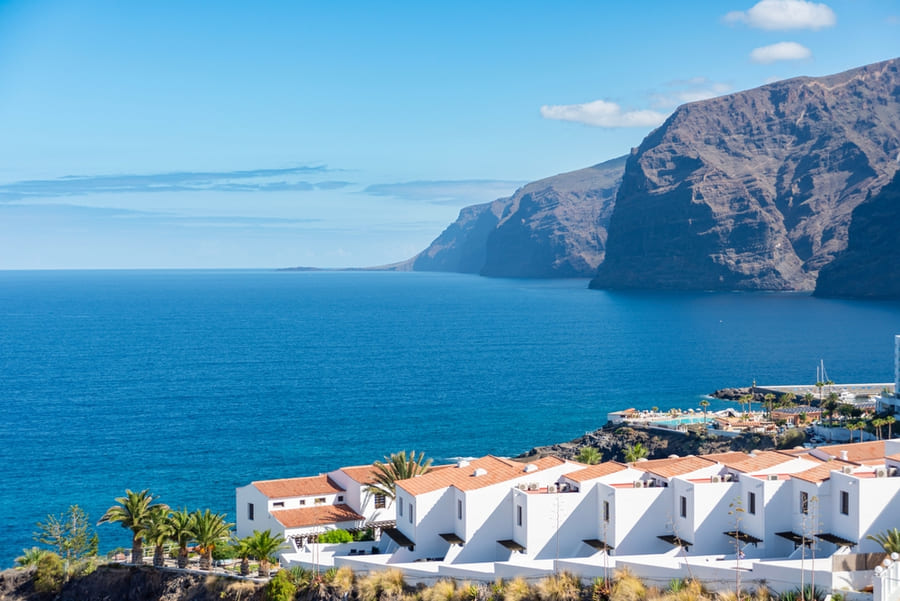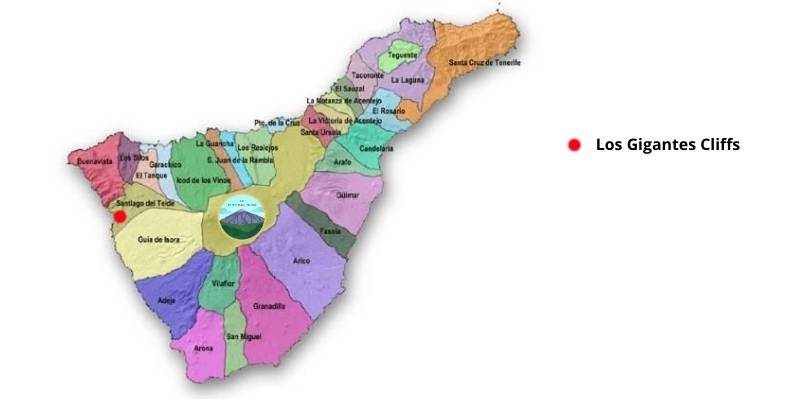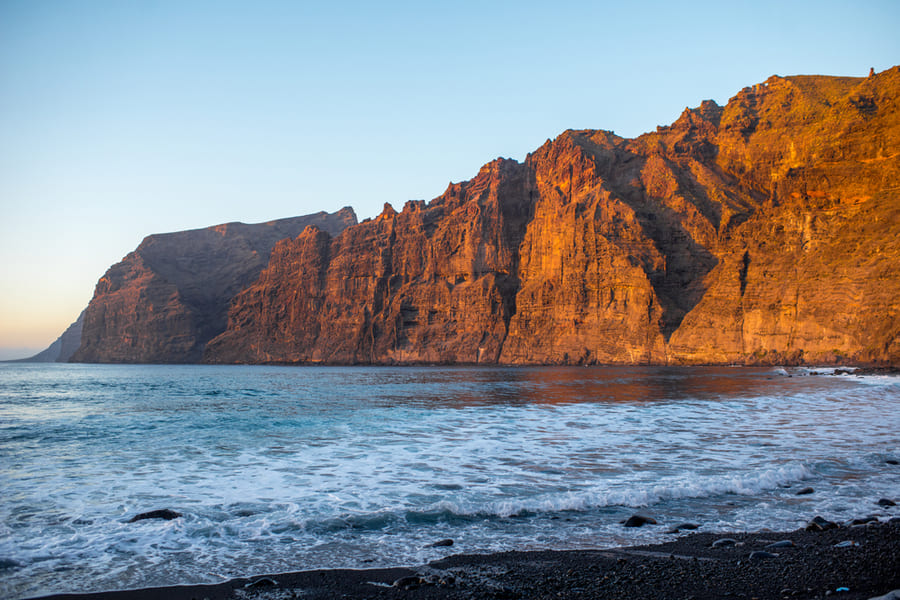Los Gigantes Cliffs
View Contents
ToggleOn the west coast of Tenerife, Canary Islands, the majestic Los Gigantes cliffs rise, one of the most impressive and emblematic geological formations of the entire Canary archipelago. These cliffs, known to the Guanches as the «Wall of Hell,» offer a natural spectacle of great beauty and a living testimony to the volcanic activity that formed the islands.

Location

The Los Gigantes cliffs are located in the municipality of Santiago del Teide.
Geological Origin
Los Gigantes are vertical rock formations that rise from the ocean to heights reaching nearly 600 meters. Their origin dates back to the volcanic activity that has characterized the Canary Islands for millions of years. These cliffs are mostly basalt, an igneous rock formed from the rapid cooling of iron- and magnesium-rich lava.
The imposing presence of these cliffs is due to a complex geological process that included the accumulation of lava layers and their subsequent erosion. Erosion, both wind and marine, has shaped these cliffs giving them their characteristic vertical form and has contributed to the creation of a unique landscape in the region.
Biodiversity and Ecosystem
The area surrounding Los Gigantes is of great ecological importance. The cliffs and the surrounding waters host a variety of marine and terrestrial species. Several species of birds, including the protected Cory’s shearwater, nest on the rocky walls, using the natural holes of the cliffs for nesting.
The marine ecosystem in front of Los Gigantes is equally rich and varied. The deep and nutrient-rich waters make this area an ideal spot for cetacean observation, including dolphins and pilot whales, which can be frequently seen throughout the year.
Touristic Impact and Activities
Los Gigantes is not only a natural wonder but also a vital tourist interest point for Tenerife. The scenic beauty of the cliffs attracts thousands of visitors each year, making it a popular destination for activities like hiking, sailing, and diving. The Archipenque lookout offers one of the most spectacular views of the cliffs and is a starting point for many photographic and ecotourism excursions.
Tourism in this area, while beneficial from an economic standpoint, also poses challenges for the conservation of the natural landscape. Human pressure has necessitated the implementation of management measures to protect natural resources and maintain ecological balance.
protected Cory’s shearwater, nest on the rocky walls, using the natural holes of the cliffs for nesting.
The marine ecosystem in front of Los Gigantes is equally rich and varied. The deep and nutrient-rich waters make this area an ideal spot for cetacean observation, including dolphins and pilot whales, which can be frequently seen throughout the year.

Conservation Challenges
The conservation of Los Gigantes is crucial to preserving both its natural and touristic value. Local authorities and various environmental organizations are working on projects to minimize the environmental impact of tourism and promote sustainable practices. This includes regulating marine traffic, protecting endemic species, and educating visitors about the importance of conservation.
